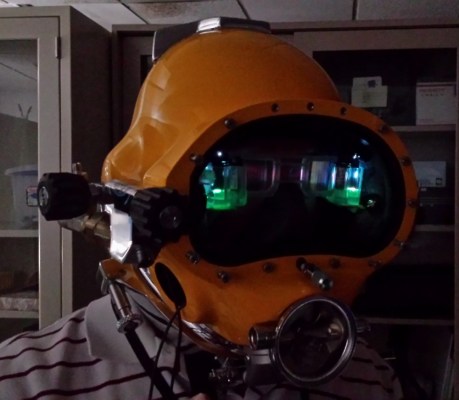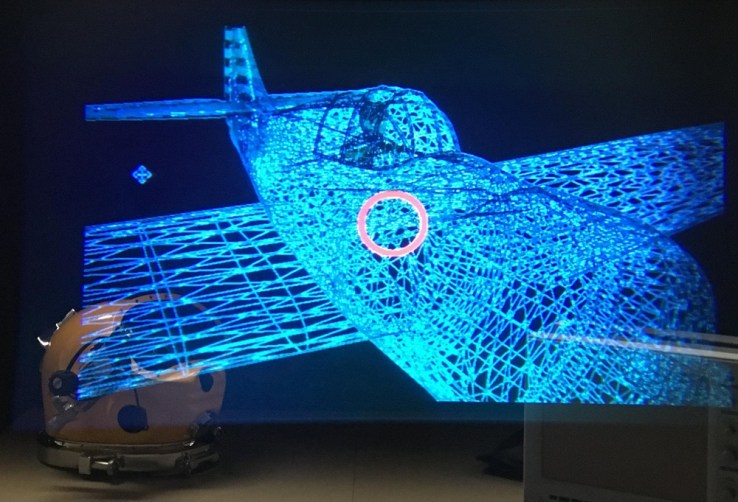Researchers at the U.S. Navy have created a high-tech, in-helmet display for divers in the service that looks like something out of “Iron Man” — perhaps one of Stark’s early prototypes. The invention could make divers safer and more effective, and it definitely looks cool.
If you’ve ever been diving, you know it’s (usually) a pleasant experience, but a clumsy and isolated one: you mask restricts your field of view and, often, your hands are encased in thick neoprene gloves. Especially for professionals, anything that streamlines the experience is welcome. And the ability to check your location or view satellite and sonar data without fiddling with a wrist-mounted display is definitely streamlining.
“By building this HUD directly inside the dive helmet instead of attaching a display on the outside, it can provide a capability similar to something from an ‘Iron Man’ movie,” said Dennis Gallagher, leader of the research team, in a Navy press release (look, it’s just the go-to visual metaphor these days, okay?). “You have everything you visually need right there within the helmet.”
Information could be passed to DAVD (Divers Augmented Video Display) from surface sources, like a ship overhead sending birds-eye imagery (well, water birds) or, in the future, cameras or miniature sonar built into the helmet itself. Divers frequently have to do their work in low visibility conditions like nighttime or silty water, so alternative vision modes are a highly practical addition.
DAVD goes directly in front of both eyes, allowing for the illusion of depth — a crucial element of true augmented reality. There are other HUDs, such as those in fighter jets, but the challenge presented by a wireless, underwater version completely contained in a pressurized suit is a unique one.
It’s just a prototype now, but the team, located at the Naval Surface Warfare Center Panama City Division, hopes to make it available for first responders and eventually commercial divers as well.

